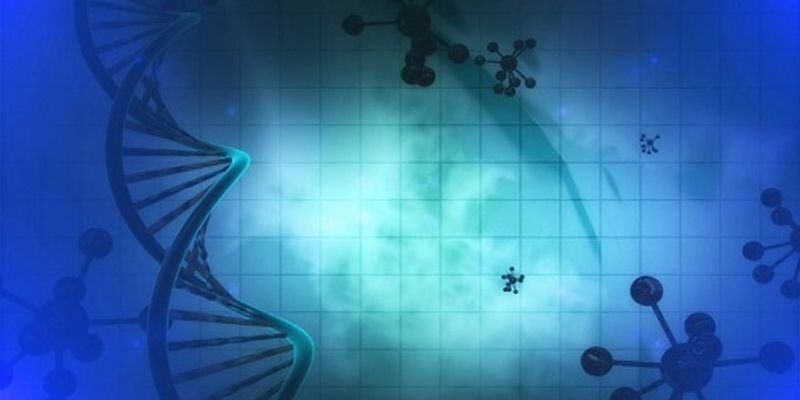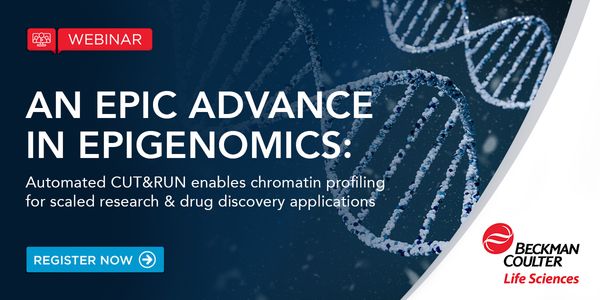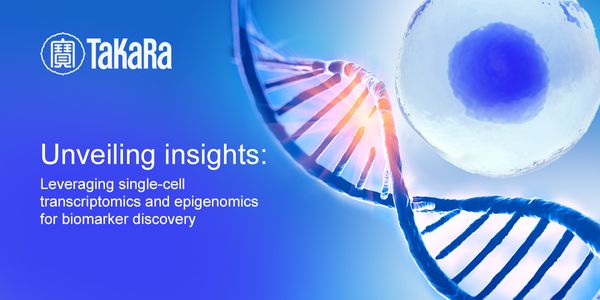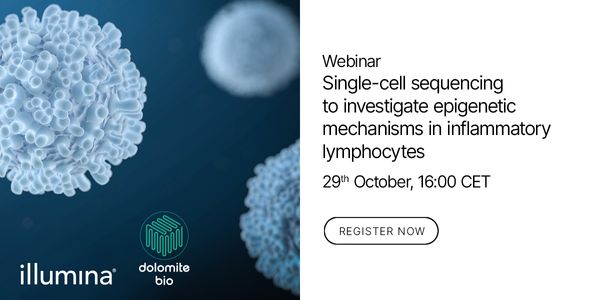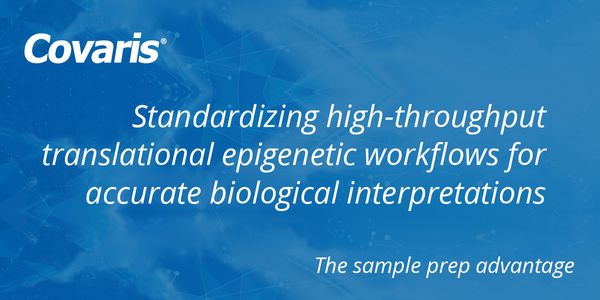Histone Modification
A histone modification is a covalent post-translational modification (PTM) to histone proteins which includes methylation, phosphorylation, acetylation, ubiquitylation, and sumoylation. The PTMs made to histones can impact gene expression by altering chromatin structure or recruiting histone modifiers. Histone proteins act to package DNA, which wraps around the eight histones, into chromosomes. Histone modifications act in diverse biological processes such as transcriptional activation/inactivation, chromosome packaging, and DNA damage/repair.
-
OCT 24, 2023 | 10:00 AMDynamic changes in chromatin drive gene expression programs during cellular development and contribute to pathological changes underlying disease. To date, efforts to characterize chromatin...MAY 31, 2023 | 11:00 AMDate: May 31, 2023 Time: 11:00am (PDT), 2:00pm (EDT), 8:00pm (CET) Single-cell genomics has facilitated the understanding of mechanisms involved in various biological processes such as tumor...MAY 11, 2021 | 10:00 AMDate: May 11, 2021 Time: 10:00zm PDT Your samples are some of the most valuable assets in the laboratory. After spending countless hours on extraction and preparation, your conclusions could...Speaker: Paulina Kocjan , Kate Meola , Zareh ZurabyanOCT 29, 2020 | 6:00 AMDate: October 29, 2020 Time: 6:00am (PDT), 9:00am (EDT), Chronic inflammation can occur as a result of a combination of genetic predispositions and environmental factors. Epigenetic modifica...Speaker: Thomas Ayers, Ph.D. , Pawel Zajac, Ph.D. , Dr. Adam CribbsSponsored By: Illumina, Dolomite BioSEP 03, 2020 | 9:00 AMDATE: September 3, 2020 TIME: 09:00am PT, 12:00pm ET xxx Learning Objectives: xxx Webinars will be available for unlimited on-demand viewing after live event. LabRoots is approved as a provi...The identification of novel drug targets and the development of next generation therapeutic strategies remain elusive goals for cancer researchers. We believe that the aberrant molecular eve...
The major function of mitochondria in cellular homeostasis has been the generation of ATP through oxidative phosphorylation. However, we have previously demonstrated that mitochondria can se...
Similar to the “histone code” hypothesis in which epigenetic marks on histone tails expand the information potential of the genetic code, different tubulin isoforms, combined wit...
In the past years, next-generation sequencing has revolutionized the way testing is done in the field of clinical oncology research. Parallel testing of genomic markers in tissue biopsies as...
In the past years, next-generation sequencing has revolutionized the way testing is done in the field of clinical oncology research. Parallel testing of genomic markers in tissue biopsies as...
Histone post-translational modifications (PTMs) play pivotal roles in chromatin dynamics and function, with alterations in the healthy profile associated with diverse human pathologies. The...
Speaker:
Michael-Christopher Keogh, PhD
Presented at: xMAP® Connect Virtual Conference (On-Demand)
MAY 03, 2018 | 11:00 AM
DATE: May 3, 2018TIME: 11:00AM PDT, 2:00PM EDTWhile stress is one of the leading causes of neuropsychiatric disorders, the molecular underpinnings of how stress induces alterations in b...
The deposition and removal of DNA and histone modifications depends on the availability of specific metabolites, suggesting that cellular metabolic pathways may dynamically regulate chromatin...
Speaker:
Lydia Finley
DATE: April 14, 2017TIME: 10:00AM PST, 1:00PM ET The study presented will represent the most comprehensive characterization of lipid changes in the context of aging and DR to d...
